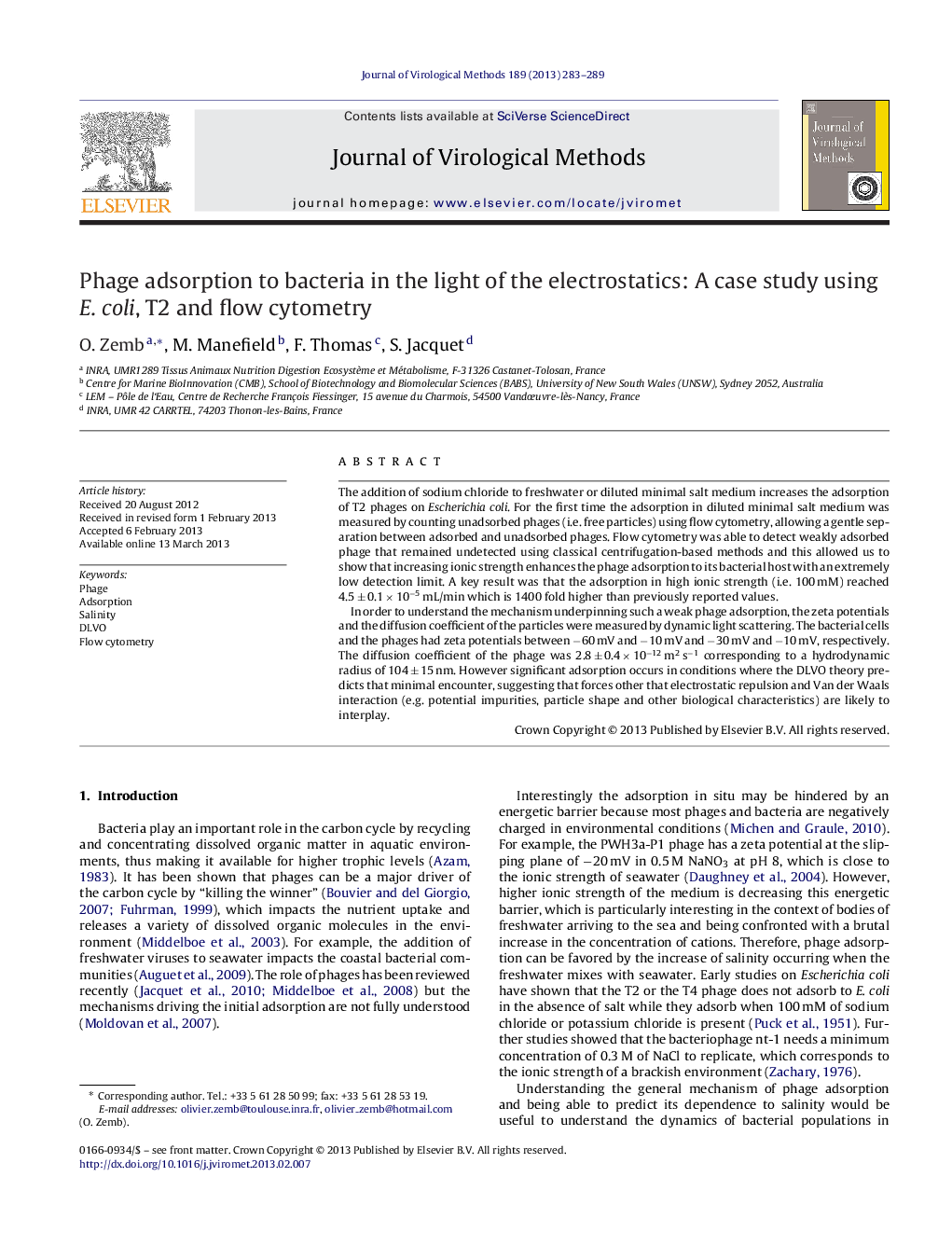| کد مقاله | کد نشریه | سال انتشار | مقاله انگلیسی | نسخه تمام متن |
|---|---|---|---|---|
| 3406689 | 1223585 | 2013 | 7 صفحه PDF | دانلود رایگان |

The addition of sodium chloride to freshwater or diluted minimal salt medium increases the adsorption of T2 phages on Escherichia coli. For the first time the adsorption in diluted minimal salt medium was measured by counting unadsorbed phages (i.e. free particles) using flow cytometry, allowing a gentle separation between adsorbed and unadsorbed phages. Flow cytometry was able to detect weakly adsorbed phage that remained undetected using classical centrifugation-based methods and this allowed us to show that increasing ionic strength enhances the phage adsorption to its bacterial host with an extremely low detection limit. A key result was that the adsorption in high ionic strength (i.e. 100 mM) reached 4.5 ± 0.1 × 10−5 mL/min which is 1400 fold higher than previously reported values.In order to understand the mechanism underpinning such a weak phage adsorption, the zeta potentials and the diffusion coefficient of the particles were measured by dynamic light scattering. The bacterial cells and the phages had zeta potentials between −60 mV and −10 mV and −30 mV and −10 mV, respectively. The diffusion coefficient of the phage was 2.8 ± 0.4 × 10−12 m2 s−1 corresponding to a hydrodynamic radius of 104 ± 15 nm. However significant adsorption occurs in conditions where the DLVO theory predicts that minimal encounter, suggesting that forces other that electrostatic repulsion and Van der Waals interaction (e.g. potential impurities, particle shape and other biological characteristics) are likely to interplay.
Figure optionsDownload as PowerPoint slideHighlights
► A new and highly sensitive method to evaluate phage adsorption on bacteria is presented.
► The diffusion coefficient of phage T2 was measured in various ionic strengths and electric fields.
► The DLVO potential of the phage–bacteria system was evaluated in various ionic strengths.
► The observed phage adsorption was compared to the DLVO-predicted adsorption.
► Discrepancies between DLVO-predicted and observed adsorption is discussed.
Journal: Journal of Virological Methods - Volume 189, Issue 2, May 2013, Pages 283–289